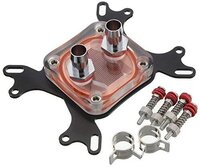How much more efficient will LEDs get if I liquid cool them down to sub-freezing temperatures?
Like, if I put COBs like the cree cxb3590 on a liquid cooled heat sync full of antifreeze and put the heat exchanger outside in the bitter freezing cold and pump sub-freezing water/antifreeze through it?
Like, if I put COBs like the cree cxb3590 on a liquid cooled heat sync full of antifreeze and put the heat exchanger outside in the bitter freezing cold and pump sub-freezing water/antifreeze through it?



 .
.  Just a fun concept/theory because that's what my brain does..
Just a fun concept/theory because that's what my brain does..